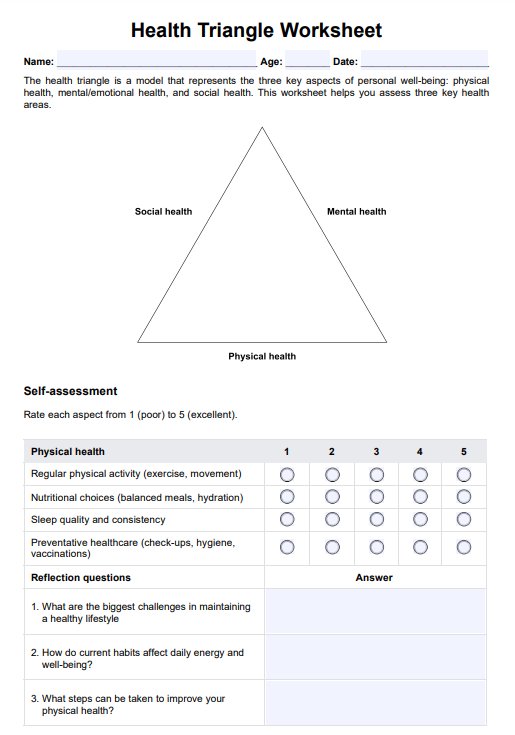Yes, families can work on the worksheets together to enhance overall family health and communication.

Health Triangle Worksheets
Enhance client's overall well-being with Health Triangle Worksheets, designed to support physical, mental, and social health development.
Use Template
Health Triangle Worksheets Template
Commonly asked questions
Many health professionals recommend these as a self-awareness tool and complement therapy or counseling.
The worksheets are designed for a wide age range, but young users should have guidance from adults or professionals.
EHR and practice management software
Get started for free
*No credit card required
Free
$0/usd
Unlimited clients
Telehealth
1GB of storage
Client portal text
Automated billing and online payments











